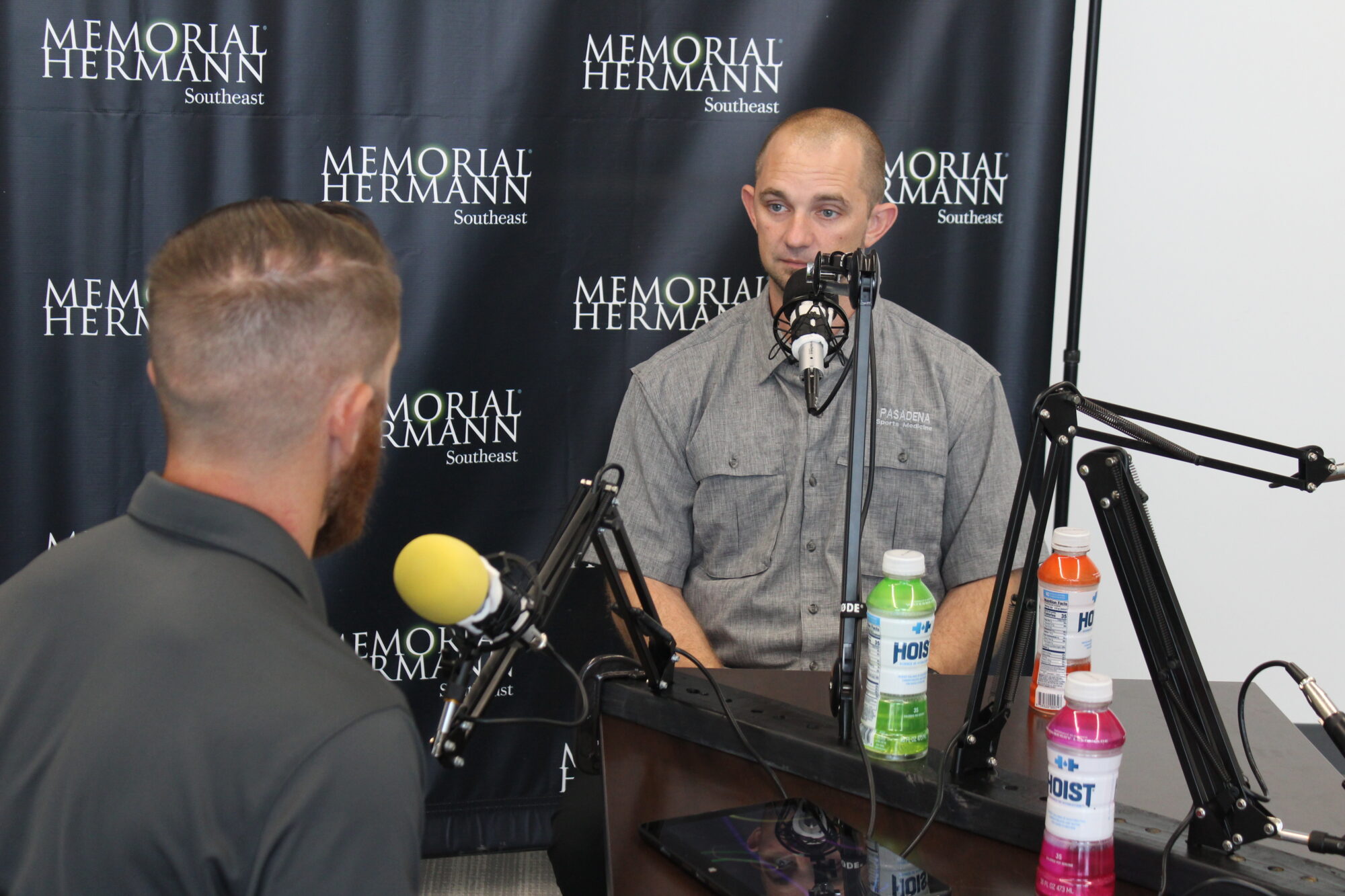Podcast: Play in new window | Download
Do you have a Mental Health EAP? Do you have a athletic injury EAP?
Dr. Hector Lopez of SMASA shares some of the tips for building a mental health EAP for Athletic Trainers

Complete the course work to earn Category A CEUs sponsored by Methodist Healthcare Sports Medicine of San Antonio – SportsMedicineBroadcast.com/CEU
Have you planned what to do in the event of a suicide threat or attempt?
The secondary setting is harder because we are dealing with minors
A good understanding of mental health
Video from YouTube – For NCAA student Athletes’ Mental health: a more educated approach
NCAA Sports Science Institute mental health awareness
According to the WHO it is a state of wellbeing in which the individual realizes his or her own abilities.
Mental illness refers to diagnosable mental disorders and health conditions
There is a stigma that it is a weakness
Myths about Mental health:
- Children do not get mental health issues – 75% begin before age 24
- Personality weakness or character flaws cause them
- I can not do anything for a person with mental health problems
Examples:
- Anxiety
- Eating disorders
- Major depression
- PTSD
- Adjustment disorder
- Social anxiety
- Bipolar disorder
- Substance abuse
- Co-existing learning disabilities
- ADHD
- Autism spectrum
- Chronic Medical illness
- Bullying
- Hazing
- Relationship Abuse
- Sexual Assault
- Gender Dysphoria
- Unexpected Pregnancy
- Gambling
- Undiagnosed medical issue
- Stressors affecting athletes
- Team culture
- Pressure to perform
- Balancing demands
Identifiers for a mental health EAP
ID based on performance
Injury causes isolation or forced retirement
Burnout due to early specialization
Poor performance
“I can’t show weakness”
Dealing with injured athletes:
Listen
What does the injury mean to the athlete?
What is your team and AT Clinic culture?
Educate about the diagnosis
Correct any misinformation
Provide a road map for recovery
“Dr. google is a big problem in my world”
An emotional response to an injury is normal
Sadness
Isolation
Irritation
Lack of motivation
Anger
Frustration
Changes in appetite
Sleep disturbance
Disengagement
Response to injury
Stress can lead to increased injury, muscle tension, poor concentration, and performance
Can trigger depression
Problematic emotional responses
Persistent symptoms
Worsening symptoms
Excessive symptoms
Summary of possible symptoms
Barriers to care:
Stigma
Poor understanding
Difficulty willing to express
Lack of time
Denial
Fear
Worried about it affecting play
Not accessible
Facilitators:
- Increased awareness
- Social support
- Encouragement from others
- Accessibility
- A positive relationship with staff
- Confidentiality
- Time
- Integration into athlete life
- Positive past experiences
- Ease of expressing emotion
Treating injured Athletes
- Rapport is key
- Supportive culture
- Respect privacy
- Acknowledge and understand their identity may be tied to athletics
- May be the first injury for them
- Be on alert for red flags
Mental Health EAP TIPS
Interview the athletes away from other athletes or with another staff member if possible
Ask open-ended questions
If the concern is self-harm be blunt
Actively listen and allow them to talk without interruption
KNOW YOUR ATHLETE
RED FLAGS
Any talk of self-harm or suicide
Talking about hopelessness and empty
Making a plan for killing themselves
Talking about great guilt or shame.
Suicide hotline
www.nimh.nih.gov/sucideprevention
5 steps graphic
Identifty an Emergency
- maintain safety for yourself and others
- Call for help
- Talk in a quiet place where you can defuse the situation
- Do not leave the student alone but do not place yourself in danger
- Develop policy and procedure and practice them
KOWN YOUR LIMITS
Your responsibility is to recognize and refer
Prevention
- PPE
- Are you stressed
- Do you want to weigh more or less
- Open-ended questions –
- are you sad, do you feel hopeless, do you feel safe
- What are the protocols at your institution
- Emergency scenarios
- Keep names and numbers accessible
- What about after hours?
- National suicide prevention hotline
- 800-273-TALK
- Text – “help” to 741741
Resources on NCAA website
NATA has a list of resources as well
Sports Science Institute through NCAA
What your school says “we don’t talk about that?”
Start the conversation – they may not know
Use the models that are published
If you are going to bring a problem forward, bring a solution.
Lean heavily onto your team physician.
Get someone’s copy to help you build yours.
Do not be afraid to act…call 911 if need be.
Dr. Hector Lopez – hector.lopez@smasatx.com
Jeremy Jackson – @MrJeremyJackson
Get your CEUs
Financial Partners
Frio Hydration – Superior Hydration products.
Donate and get some swag (like Patreon but for the school)
HOIST – No matter your reason for dehydration DRINK HOIST
MedBridge Education – Use “TheSMB” to save some, be entered in a drawing for a second year free, and support the podcast.
Marc Pro – Use “THESMB” to recover better.
